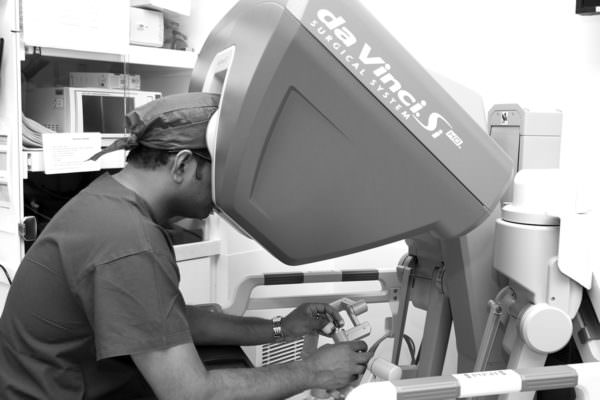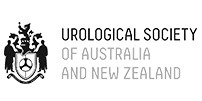Nothing advances quite like technology.
Developments in recent decades have dramatically changed how we live, and it’s no different in healthcare. Many of the systems in place today helping to preserve and save lives are down to technological progress. One currently on the rise is Nanotechnology.
Here, we explore Nanotechnology in more detail, what it is, and its potential to advance urology patient healthcare.
What is Nanochip Technology?
Nanotechnology – also known as Nanotech – refers to the technical process of breaking down an object to a ‘nano-scale’ (the molecular or atomic level) and reassembling its parts for use in an improved way.
Using Nanotechnology, scientific engineers have created the Nanochip, which works similarly to the microchip, but is much smaller and exponentially more powerful.
Thanks to its enhanced performance, the Nanochip looks destined for a world beyond the microchip, already changing how many industry processes work – particularly in the military, manufacturing and commercial electronics sectors. Yet perhaps its most promising uses for developing ground-breaking methods will come in our own industry: healthcare.
Nanochip Technology in Healthcare
Traditionally, medical professionals have been limited in their methods to diagnose and treat diseases, with technology only allowing for a macro approach and viewpoint. Now, with Nanotech and its ability to scale beyond the macro and micro levels, atoms and molecules can be manipulated for the better, leading to greater patient diagnostics and treatments – even prevention – of many diseases.
Nanochip technology is already used in healthcare across numerous applications:
Diagnostics
While medical diagnosis remains one of the health industry’s biggest challenges, Nanotech is positively reducing the number of patients misdiagnosed each year.
Smart pills, for example, use Nanochip Sensors to detect an illness before the presence of symptoms, improving accuracy and reducing the costs of misdiagnosis. Another diagnostic tool, the Nanobot, travels internally to where a disease is suspected and photographs visual activity for the medical team’s review.
Treatments
Regenerative medicine benefits from Tissue Nanotransfection, which uses a silicone Nanochip device to reprogram biological tissues and repair damaged skin. The Nanochip applies a harmless electric spark to the tissue and delivers genes as blood vessels in a nanosecond.
A similar method is used to reverse nerve damage caused by diabetes or brain damage resulting from a stroke.
Drug Administration
The same smart pills used for diagnostics are helping patients manage drug administration using remote control units and sensors to release medicines into the body when required intermittently.
Nanotechnology and Urology
When we consider the use of Nanotech in healthcare to date, there are clear benefits to disease diagnosis and treatment in terms of accuracy and medical management – which is excellent news for urology professionals and their patients alike.
Many individuals visiting a uUologist have a minor ailment, while for other people, their condition is more serious. A clear and accurate diagnosis is the first step towards a successful treatment program – particularly with life-threatening diseases such as prostate cancer.
Prostate cancer diagnostics
As with many cancers, prostate cancer diagnosis relies on MRI technology to detect tumours. Yet the process picks up on cells only when they have changed behaviour – malignant or benign – and biopsy is still a requirement to assess individual cells of concern. Not only is this lengthy and costly, but malignant cells may have multiplied further (and benign ones become malignant) during this exploratory period.
Nanotech-based imaging has the potential to drill down into each cell at the molecular level and pinpoint the precise areas of malignancy without the need for traditional biopsy. What’s more, the technology can determine the size and progression of the cells in question, helping Urologists determine and proceed with a suitable course of treatment quickly.
Erectile Dysfunction treatments
While Erectile Dysfunction is not considered life threatening, it is highly frustrating and can happen to any man at any time of life. Currently, the thousands of patients suffering from ED have limited treatments available to manage their condition without complications – from mild issues like PDE5-I inhibitor drugs causing nausea to more serious ones such as implants causing vascular injuries.
Yet Nanotech looks to have answers to treating ED or even curing it altogether in the next few years.
In one example, a US study investigated using Nanoparticles as a stimulus for achieving an erection. Scientists packed the particles into a topical gel which was then synthesized on application to cause a biological reaction in the penile shaft. After proving successful during trials, in both helping to achieve and sustain an erection, this non-invasive treatment may yet become a mainstream offering to men living with ED, whatever the root cause.
There is also evidence of Nanotech improving the Penile Implant process, which could help the life quality of patients suffering a severe case of ED. Today’s method of inserting a manual pump mechanism into the scrotum and penis is invasive, complex and carries risk, and some patients say it lacks feeling. Using soft robotics and Nanotechnology, scientists believe they can reduce the risk of complications post-surgery while making the process of erection feel natural.
Nanochip: The Future of Urology Healthcare?
With any technology, the journey from concept to common use varies. However, it seems likely Nanotech will embed itself further in healthcare and other industries in the coming years.
Beyond improving the accuracy of cancer diagnostics and creating life-changing treatments, what else can we expect from Nanotech to help the lives of urology patients on a daily basis?
It’s possible the future of urology will look something like this:
- PSA testing: patients will self-administer PSA tests using just a single drop of blood, helping with a prostate cancer diagnosis and Active Management
- Urinary tract infections: home detection devices will help patients to self-diagnose quickly and more accurately
- Cancer management: sensors will release drugs intermittently into the patient’s body without the need to visit a cancer facility or hospital
- Health monitoring: wearable devices will take readings on heart rate and blood pressure to support patients undergoing lifestyle changes
Any such advancements will only help patients and practitioners to diagnose, treat or manage conditions efficiently, reducing healthcare facility waiting times and stress for everyone involved.
Sydney’s Leading Urology Experts
Dr Katelaris and the team at Katelaris Urology provide expert advice, support, diagnostics and treatment for various conditions, including prostate cancer.
We’ve helped thousands of men to cure ED, incontinence and prostate problems and lead healthy lives.
If you have questions or would like the advice of an expert, talk to our team today.
References
- National Cancer Institute (US). (n.d.). Cancer and Nanotechnology. Retrieved from https://www.cancer.gov/nano/cancer-nanotechnology
- Forbes. (n.d.). 3 Key Areas Where Nanotechnology is Impacting Our Future. Retrieved from https://www.forbes.com/sites/chuckbrooks/2022/05/31/3-key-areas-where-nanotechnology-is-impacting-our-future/?sh=1af9ca986741
- Indiana University School of Medicine. (n.d.). Tissue Nanotransfection: Reprogramming Tissues for Regenerative Medicine. Retrieved from https://medicine.iu.edu/research-centers/regenerative-medicine-engineering/research/tissue-nanotransfection
- National Library of Medicine (US). (n.d.). Nanotechnology in Medical Diagnostics and Treatment: A Review. Retrieved from https://pubmed.ncbi.nlm.nih.gov/28065359/







